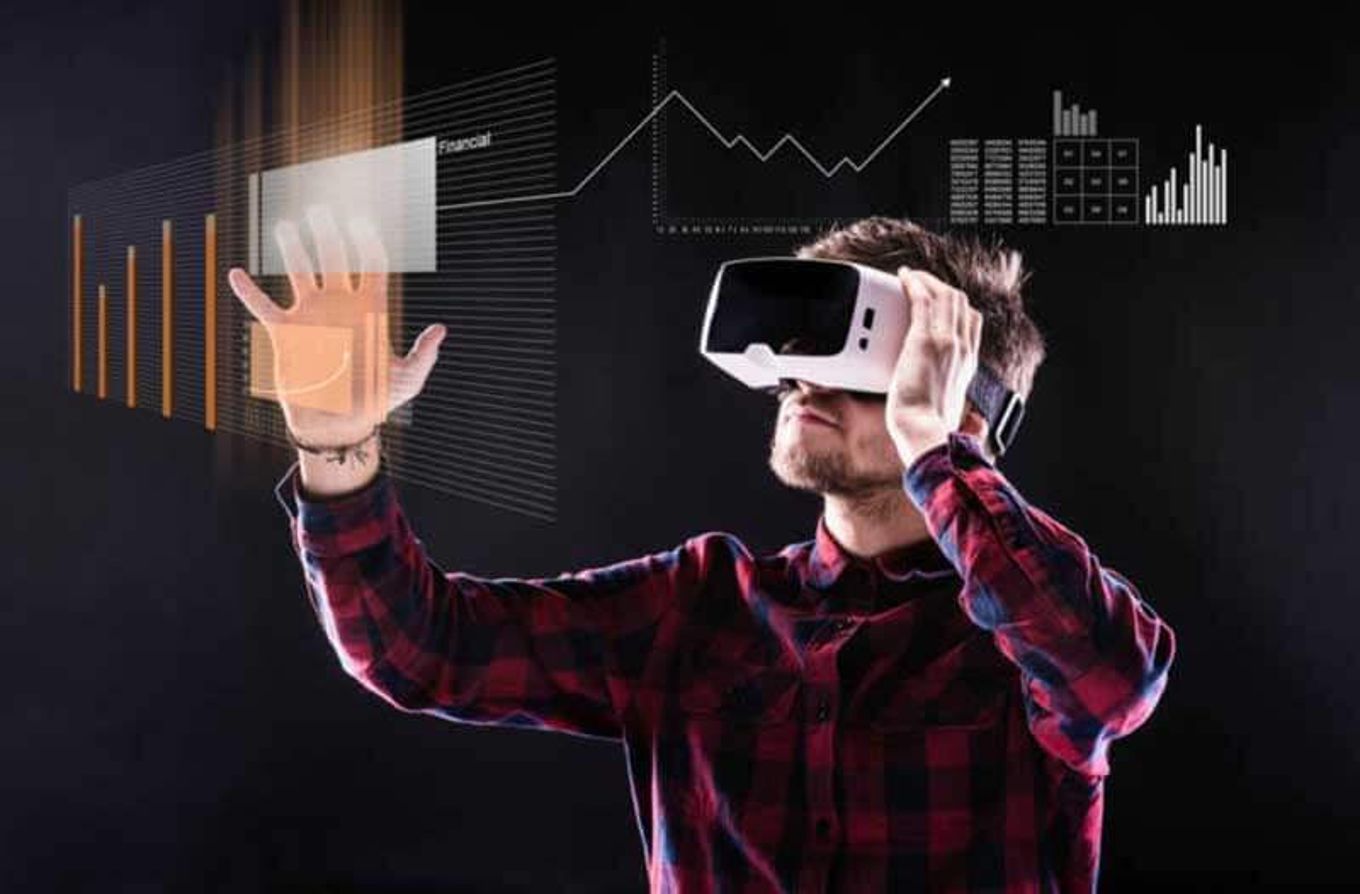

Spatial computing is the next step in shaping the digital world around us. It is the technology that promises to redefine our understanding of how we interact with digital information, creating experiences that are more intuitive, immersive, and potentially game-changing across a wide range of industries.
In this comprehensive guide, we’ll dive into the depths of spatial computing, understanding its core principles, and exploring the current and future applications that are reinforcing its role as a transformative force in technology.
Spatial computing is a broad term that encapsulates various technologies and interactions— from virtual reality (VR) and augmented reality (AR) to mixed reality (MR) and 3D mapping. The concept is centered around the idea of using spatial awareness to design and integrate digital experiences into the physical space we inhabit.
Unlike traditional computing, which is confined to a screen, spatial computing seeks to break those bounds, allowing users to interact with digital content within the context of their environment.
At the heart of spatial computing are a few key elements:
Also Read: Top 10 Benefits Of AWS
Spatial computing didn’t emerge out of thin air; its evolution has been a gradual process, with each milestone building upon the last.
VR and AR were the first major steps towards a spatial computing paradigm. VR immersed users in entirely digital environments, while Augmented Reality overlaid digital content onto the physical world via cameras and screens.
Mixed reality emerged as a significant leap, offering more dynamic experiences by blending real and virtual worlds. One of the most popular examples is Microsoft’s HoloLens, which projects holograms into the user’s environment.
The latest wave of spatial computing is marked by advancements in natural user interfaces (NUIs) and interactive 3D design. With touchless gestures, eye tracking, voice commands, and more, the barriers between humans and technology continue to blur.
The true power of spatial computing lies in its applications. Let’s look at how spatial computing is already reshaping industries and user experiences.
In the gaming and entertainment industries, spatial computing is creating new worlds, offering unparalleled immersive experiences. Games like “Pokémon Go” and “Beat Saber” have already given us a taste of what’s possible, while theme parks are integrating AR to redefine attractions.
Businesses and educational institutions are using spatial computing to revolutionize training and collaboration. Employees can train in realistic virtual environments, and students can interact with 3D models as if they were physically present.
In healthcare, spatial computing is aiding in pre-operative planning, surgical navigation, and patient education. It’s also being explored as a tool for physical and cognitive therapy, creating engaging exercises that contribute to faster recovery.
For architects, engineers, and product designers, spatial computing allows the transition from 2D drawings and 3D models on a screen to truly immersive, interactive experiences. This shift improves design understanding and can lead to better final products.
The potential for spatial computing is limitless, and its future is full of exciting possibilities. We can expect to see advancements in a few key areas.
The integration of spatial computing with AI will allow for even more contextual and responsive user experiences. Imagine a virtual assistant that is not only voice-activated but also capable of understanding and responding to your physical environment.
The idea of a “spatial web” is also gaining traction, where digital content is distributed across AR and VR devices, creating a shared, persistent, and location-based digital space. This could lead to new forms of social interaction, commerce, and content consumption.
Advancements in 3D scanning and motion tracking will bring us closer to creating lifelike digital representations of ourselves. These avatars, or “digital twins,” can perform tasks in the digital space on our behalf.
E-commerce is already a huge market, but spatial computing could take it to another level. Imagine being able to try on clothes or place furniture in your home before making a purchase, all through an AR app on your smartphone.
For those looking to get involved in the spatial computing revolution, there are a few pathways to explore.
Familiarize yourself with 3D modeling, game development, and user experience design. Specific skills in spatial interaction and behavior design will be highly sought after.
Stay updated on the latest developments, as spatial computing is a rapidly evolving field. Join research groups, attend conferences, and network with professionals in the industry.
If you’re a developer, start experimenting with spatial computing by building simple applications. There are growing communities of spatial computing enthusiasts who can provide support and feedback.
The spatial computing community is collaborative by nature. Share your findings, engage in open-source projects, and contribute to the democratization of spatial technology.
Also Read: 13 Free Tools To Easily Transfer Large Files Online
Spatial computing represents a fundamental shift in how we interact with the digital world. It opens up a realm of possibilities that were once confined to the realms of science fiction. As the technology matures and becomes more accessible, it will undoubtedly find its way into every aspect of our lives, from work and education to entertainment and social interaction.
The journey to fully realizing the potential of spatial computing will be long and complex, but each step forward is a step into a future that is richer, more connected, and more human.
Sign up to the no-code platform for all things AR, VR and Spatial Computing platform. Stay curious, keep innovating, and embrace the spatial revolution. The future is right before our eyes—and it’s as real, or virtual, as we choose to make it.
Exploring the Top 5 Voice AI Alternatives: What Sets Them Apart?
How iGaming Platforms Ensure Seamless Integration of Casino Games and Sports Betting?
Data Loss on Windows? Here's How Windows Recovery Software Can Help
Integrating Widgets Seamlessly: Tips for Smooth Implementation and Functionality
School sports days are a fun event for all students, but it’s important that the…